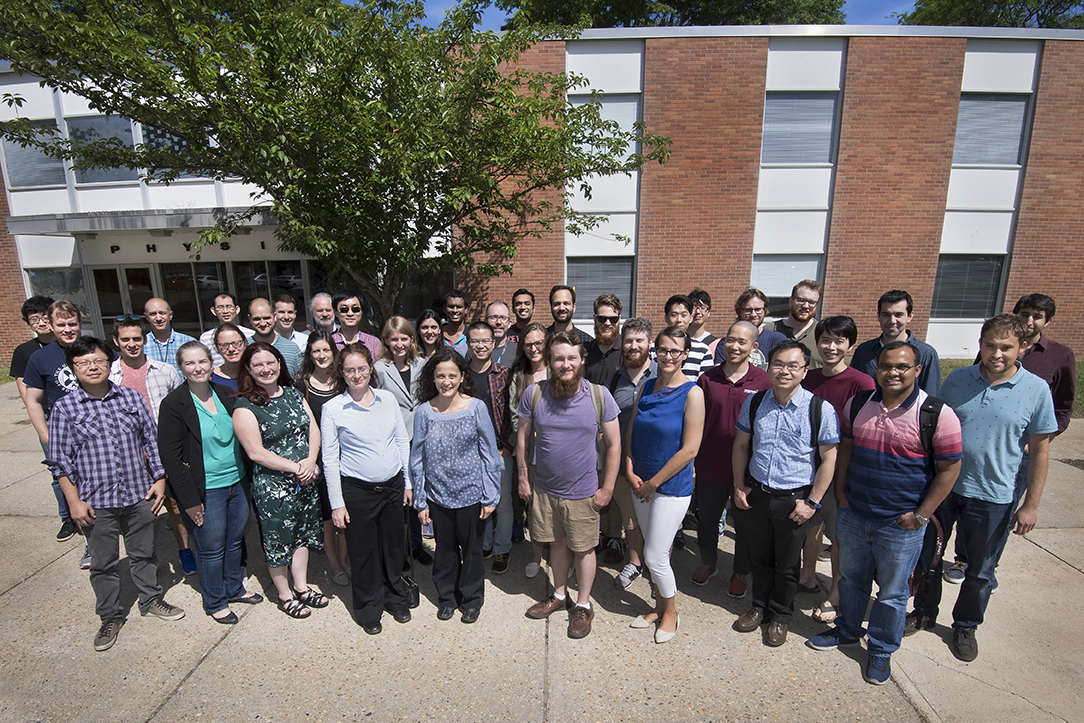RIKEN BNL Research Center Workshop
The Definition of Jets in a Large Background
Motivation
Jets, the collimated spray of particles produced by a high momentum quark or gluon, have been a key observable in high energy particle and heavy ion physics. While in general, observables should be clearly defined with the same definition used in both theory and experiment, this has always been challenging for measurements of jets. Since the fragmentation of partons into final state hadrons is not calculable perturbatively and final state particles cannot be assigned unambiguously to particular partons, jet definitions rely on what particles a particular algorithm includes in the jet reconstruction process. This is particularly challenging when the jets are surrounded by particles from a high multiplicity underlying event such as those in heavy ion collisions, high luminosity proton-proton or electron-ion collisions. The community currently faces similar issues regarding jet definitions to those faced in particle physics in the preceding decades.
Early measurements of jets in electron-positron and proton-proton collisions used multiple definitions, complicating comparisons between theoretical calculations and data. A meeting was held in 1990 to discuss how to meaningfully compare experimental measurements and theoretical calculations. This discussion resulted in the Snowmass Accord, an agreement on the properties required for jet finders. The requirements for jet definitions to be used in experimental measurements and the corresponding theoretical calculations laid out in the Snowmass Accord are incomplete for heavy ion collisions because it does address the influence from the large and fluctuating underlying event background. In order for any agreement to be successful, it must also have wide acceptance within the community. In practice, it took decades for the lessons of the Snowmass Accord to be implemented. While the outcome of the Snowmass Accord is the standard today, these definitions and this discussion must be revisited with consideration of how to handle the background for jets in high multiplicity environments.
This discussion is relevant not only to the heavy ion community but also particle physics, which must subtract a large background due to pile-up, and measurements at the future electron-ion collider. We propose a meeting to discuss the interplay between experimental techniques and theoretical calculations with the aim of reaching an agreement on the way forward for extracting jet measurements from large background events such as those in heavy ion collisions and high luminosity p-p or electron-ion collisions.
The corresponding topics and sessions are:
- Experimental methods for background subtraction
- Theoretical definitions of background and background suppression
- Use of RIVET/follow up on Lisbon Accord
- Application to electron-ion collisions and high luminosity/multiplicity environments
The goal of this workshop is a living document summarizing the findings with recommendations on current best practices for measuring jets in high multiplicity events.
Workshop Organizers
Megan Connors (Georgia State & RBRC)
Guilherme Milhano (LIP-Lisbon & CERN)
Christine Nattrass (UT Knoxville)
Rosi Reed (Lehigh)
Sevil Salur (Rutgers)
Accommodations
Click on the "Workshop & BNL Information" tab above to find accommodation information.




